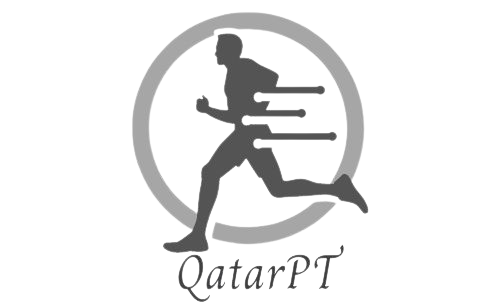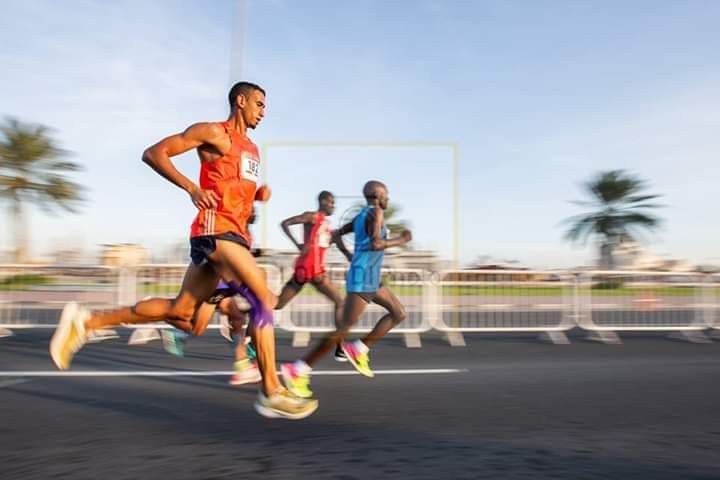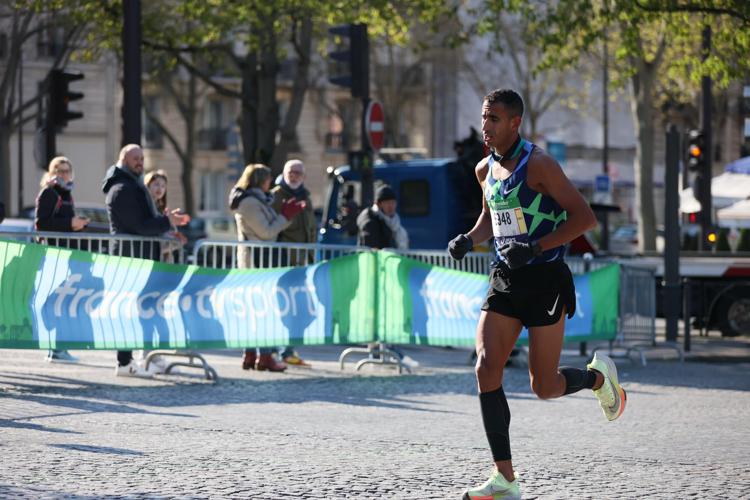Overtraining Syndrome ظاهرة فرط التدريب ما فوق التدريب
▪ماهي ظاهرة فرط التدريب
Overtraining Syndrome

▪ الإفراط في التدريب يعرف على أنه انخفاض في الأداء وحالة التعب المزمن يستمر على مدى شهر إلى عدة أشهر على الرغم من الخضوع للراحة.
-كما يعرف بأنه الظاهرة المصاحبة لعدم اكتمال فترة الراحة من جرعات التدريب والتي يترتب عنها تدهور القدرة على التدريب وهبوط حاد في الأداء.
▪ماهي أنواع ظاهرة فرط التدريب؟
النوع الأول:
ويحدث نتيجة التحفيز النفسي و الذهني العالي جداً عند الرياضي وخاصة في المنافسات و التي تتمثل ظواهرها بزيادة معدلات التسارع النبضي، التعرق، أعراض عصبية، اضطرابات نفسية.
النوع الثاني:
و الذي يحدث نتيجة التغيرات الفسيولوجية التي تهدف إلى أحداث حالة تكيف مع التحميل التدريبي العالي، فإن ظواهرها تتمثل في فقر الدم و اختلال في الإفراز الهرموني.
▪ماهي العلامات التحذيرية التي تنبهك قبل الوقوع في ظاهرة فرط التدريب؟
إذا لاحظت خمس علامات (أو أكثر) من العلامات التالية ، فيجب عليك التوقف عن التدريب لمدة عشرة أيام على الأقل. كما يجب عليك تحسين خطة التدريب الخاصة بك مع فترات التعافي والتفكير فيما إذا كان يجب عليك خفض مستوى الكثافة لفترة من الوقت.
-أرجل ثقيلة ومتعبة.
-التعب المستمر.
-المزاج السيئ والتهيج.
-مزاج مكتئب.
-فقدان الدافع للتدريب.
-تغيرات في الشهية (أكثر أو أقل).
-أداء ضعيف أو متراجع.
-مشكلة في النوم. زيادة الحاجة للنوم.
زيادة معدل ضربات القلب أثناء الراحة.
آلام عضلية بصفة مستمرة.
ضعف قدرات الاسترجاع.
تزايد في مستوى الإصابات والأمراض.
الشعور بالعطش بصفة مقلقة.
▪أسباب حدوث ظاهرة فرط التدريب:
1- أسباب متعلقة بأخطاء في تقنين الحمل التدريبي:
زيادة مستوى حمل التدريب على الحدود البيولوجية للرياضي .
-الرفع المفاجئ لحمل التدريب و عدم مراعات التدرج والتموج المنطقي للحمل التدريبي في مختلف الدورات التدريبية خاصة بعد فترة طويلة من الراحة.
الرتابة وعدم احترام مبدا التنويع في مكونات الحما التدريبي.
-الخطأ في تحديد الفترات الصحيحة للراحة او سوء تشكيلها.
عدم الأخذ بعين الاعتبار تراكم نتائج الحما البدني والنفسي للمنافسة.
2- العوامل المحيطة بالعملية التدريبية:
أخطاء في برمجة التغذية الرياضية.
ضغط النتائج من المحيطين بالرياضي من عائلة، أنصار، إدارة ،…
المشاكل الأسرية.
العلاقة بين الرياضي والطاقم التدريبي.
عدم الاستقرار النفسي و الفني .
مخلفات الوقوع في ظاهرة فرط التدريب:
زيادة مستويات الكورتيزول وزيادة الوزن.
-احتمالية الإصابة بتعب الغدة الكظرية.
تقلبات المزاج واضطرابات النوم.
تأثير سلبي على الرغبة الجنسية والدورة الشهرية والخصوبة.
فقدان الكتلة العضلية وانخفاض القوة.
-زيادة الالتهاب وضعف المناعة.
احتمالية الإصابة بأضرار في القلب.
▪كيف يمكن الكشف عن ظاهرة فرط التدريب:
الكشف عن أعراض ظاهرة فرط التدريب بالقياس اليومي لعدد ضربات القلب ووزن الجسم أثناء الراحة و ملاحظة أية تغيرات ذات دلالة تحدث بين قراءة و أخرى.
الكشف عن ظاهرة فرط التدريب عن طريق الإجابة عن أسئلة استبان محكم مثل استبيان SFMS.
الكشف بواسطة المؤشرات البيولوجية في شكل تحاليل طبية مثل :
-تركيز هرمونات ( الكورتيزول، التستوستيرون، الجلوتامين) في الدم.
اختبار Heikki Rusko:
يمكنك الحصول على هذا القياس بالطريقة التالية:
استلق وارتاح براحة لمدة 10 دقائق كل يوم في نفس الوقت (الصباح أفضل).
في نهاية 10 دقائق ، سجل معدل ضربات قلبك بالنبضات في الدقيقة.
قف وبعد 15 ثانية خذ معدل ضربات قلبك مرة ثانية بنبضات في الدقيقة.
بعد 90 ثانية ، قس معدل ضربات قلبك بعدد النبضات في الدقيقة للمرة الثالثة.
أخيرًا ، بعد 120 ثانية ، قم بقياس معدل ضربات قلبك بعدد النبضات في الدقيقة للمرة الرابعة.
إذا كانت النبضات ثابتة بين القياسات فهذا مؤشر جيد على سلامتك من هذه الظاهرة وفي حالة وجود فوارق يجب أن تخضع للراحة.
▪كيف نتجنب ظاهرة فرط التدريب؟
يمكن تجنب ظاهرة فرط التدريب بتفادي الوقوع في مسبباتها المذكورة أعلاه….بقلم المحضر البدني الدكتور منصوري عبد الل
Overtraining Syndrome
Burnout, or overtraining syndrome, is a condition in which an athlete experiences fatigue and declining performance in sport despite continuing or increased training. This decrease in performance and a state of chronic fatigue can persists over one to several months despite undergoing rest. When we use the expression ‘syndrome’ we high light that there are multiple causes and we acknowledge that exercise (training) is not necessarily the sole causative factor of the syndrome
What happens when you suffer from Overtraining Syndrome?
The athlete typically fails to recover adequately from training and competitions. They present with many different symptoms due to some changes in physical and mental fatigue, hormonal changes and suppressed immune system (increases risk of infections). There are a range of risk factors and causes that we will mention later.
What are the signs and symptoms of Overtraining Syndrome?
There are many different signs and symptoms that the athlete will experience if they are suffering from Overtraining Syndrome (OTS). Depending on the presentation it will also be important to exclude some organic causes by seeing a doctor and arranging necessary tests. The athlete often experiences a combination of different symptoms that we should be aware of.
Common signs and symptoms may be:
- Heavy and tired legs
- Muscle and join pains
- Constant fatigue
- Prolonged recovery time
- Personality or Mood changes: low mood, irritability and anger
- Frequent illnesses (especially coughs and colds)
- Loss of motivation to train
- Difficulty completing usual routines
- Changes in appetite (more or less)
- Reduced performance
- Sleep disturbance: difficulty sleeping or increased need for sleep
- Increased heart rate at rest
- In women: disturbed menstrual cycle.
Causes of Overtraining Syndrome
1. Change in Training Load
The aim of increasing training load is obviously to enhance performance. However, if the Training Load is intensified incorrectly it can result in a declined performance. It is important to have a carefully planned program that suits the athlete.
Sufficient periods of rest is crucial to be able to achieve a ‘supercompensation’ effect that will take the athlete’s performance to a higher level than the usual baseline. It also allows recovery and preventions of illness and injury.
It is not unusual for an athlete to show a slight reduction in performance after increased training load or tapering period but with adequate recovery this will be followed by the ‘supercompensation’ phase which is usually associated with enhanced performance. If recovery is not sufficient and the intense training continues the athlete will reach a point of going beyond the desired state (overreaching) and this will most likely cause stagnation or decreased performance associated with the Overtraining Syndrome.
Mistakes when increasing Training Load
- Increasing the level of training load beyond what the athlete is ready for. The program is not matched to the athlete’s actual fitness level. Can often happen is many athletes in a big group is following the same program, as every athlete is on a different level.
- Suddenly increasing the training load and not taking into account the importance of gradually lifting the training intensity in the various training sessions, especially after a long period of rest.
- Having a very monotonous training program, doing too much of the same thing, and lacking variation of session types.
- Not ensuring enough rest between your sessions.
- Not taking into account the accumulation of physical and psychological impact of the competition.
2. Factors surrounding the training process
- Incorrect Sports Nutrition: Not getting the right or enough nutrition to enable good recovery and progress.
- The pressure from people around the athlete: coaches, supporters, management etc.
- Family and work-related problems, which will also impact on the athlete’s physical and mental wellbeing and hence affect performance and recovery.
Prevention of Overtraining Syndrome?
- By being aware of the risk factors that put the athlete at an increased risk (see list above)
- Regular monitoring and changes in:
- Performance: use training diary, document perceived effort on each session
- Physiological state: be observant on continues muscle fatigue, muscle and/or joint pains. Log experience in training diary.
- Psychological state: persistent change in mood such as depression, irritability, angero
- Resting heart rate: some evidence shows that a persistent increase in resting heart rate of at least 6bpm may indicate development of OTS.
- Immunological: increased frequency of infections.
- Ensure that the training program is individualized to the athlete’s current state of fitness
- Careful program planning to make sure that there is a gradual and not sudden increase in training load and take into account external pressures such as family and work impacting on how well the athlete can commit to the program.
- Sufficient rest or easy sessions in the training program. This is just as important in ensuring progress and strength development in the athlete. Whilst it also decreases the risk of injuries and overtraining.
- Good nutrition and fluid intake is key for an athlete’s health and it plays a very important role in achieving growth, improvement and maintaining health.
- Enhance recovery by considering ice-baths, massage and mobility/stretching as a part of the training program.
Overtraining syndrome can be challenging to diagnose as there is not one single marker we can use that will indicate or diagnose OTS.
We will rely on changes that the athlete is demonstrating and every athlete may present differently. There is a fine line between achieving optimal performance and performance impairment that’s why it is important to be aware of the different ways we can monitor, recognize and prevent OTS.
References:
- Meeusen R, Duclos M, Foster C, Fry A, Gleeson M, Nieman D et al. Prevention, diagnosis and treatment of the overtraining syndrome: joint consensus statement of the European College of Sport Science and the American College of Sports Medicine. Med Sci Sports Exerc 2013; 45:186-205.
- Lamberts RP, Lambert MI. Day-to-day variation in heart rate at different levels of submaximal exertion: implications for monitoring training. J Strength Cond Res 2009; 23:1005-1010.
- Halson SL, Jeukendrup AE. Does overtraining exist? An analysis of overreaching and overtraining research. Sports Med 2004; 34:967-981.
- https://www.aspetar.com/journal/viewarticle.aspx?id=120#.Y1Dqey0RpQI Overtraining Syndrom. Written by Romain Meeusen, Susan Vrijkotte, Kevin De Pauw and Maria Francesca Piacentini.
- https://www.sciencedirect.com/topics/medicine-and-dentistry/overtraining-syndrome








Ӏ am really happy to glance at this weblog posts which consists of plenty of helpful facts, thanks for providing ѕuch statistics.